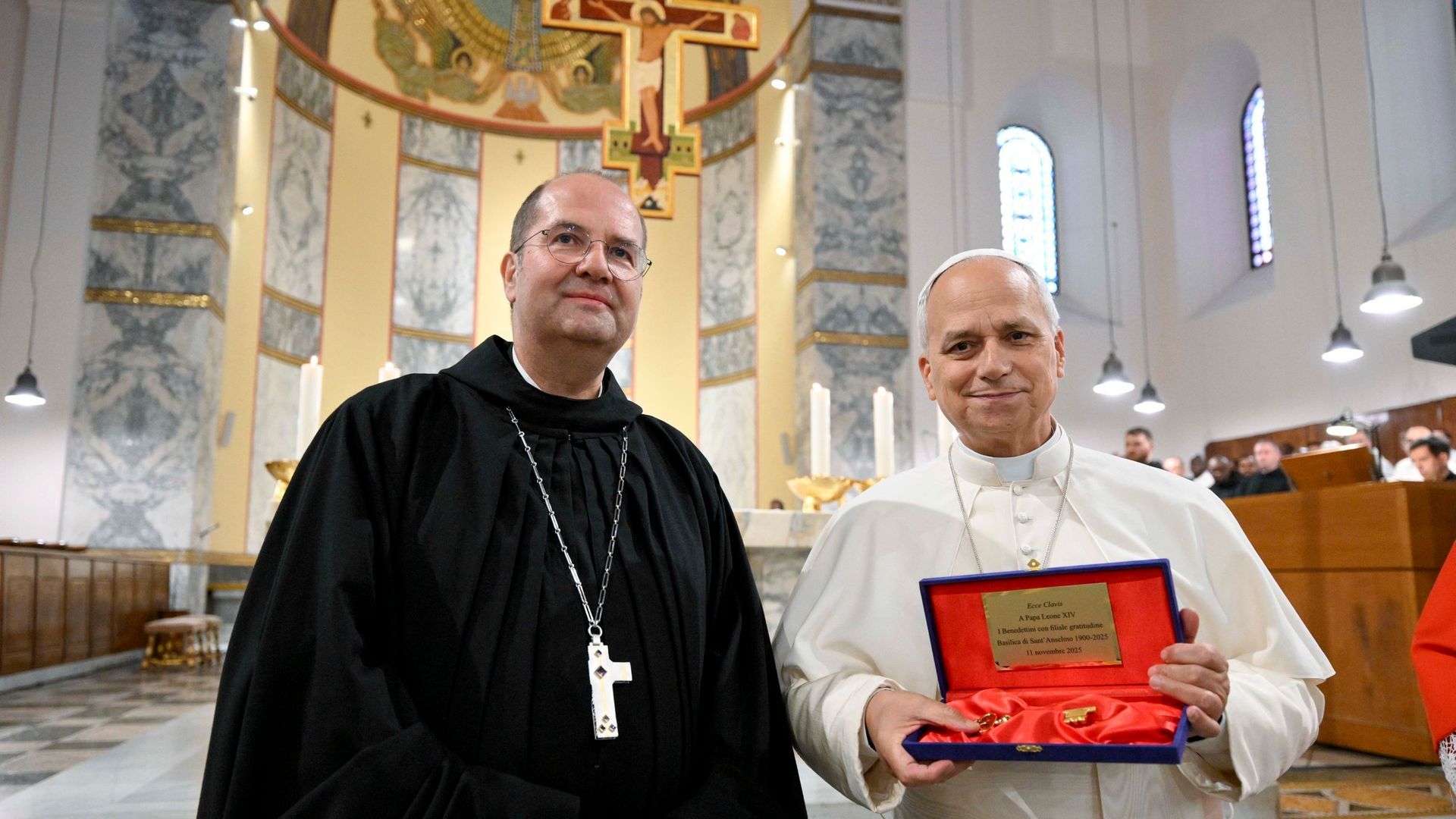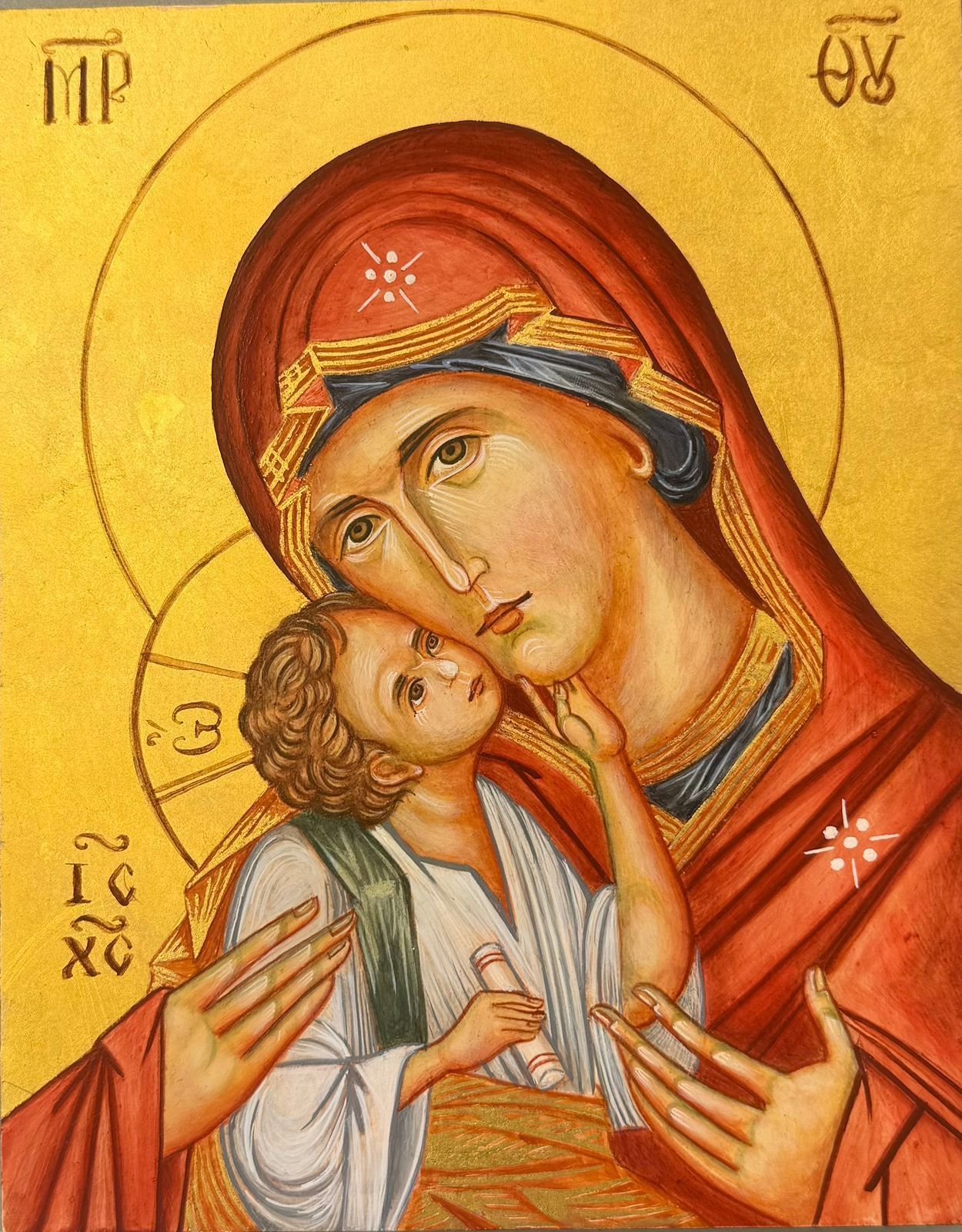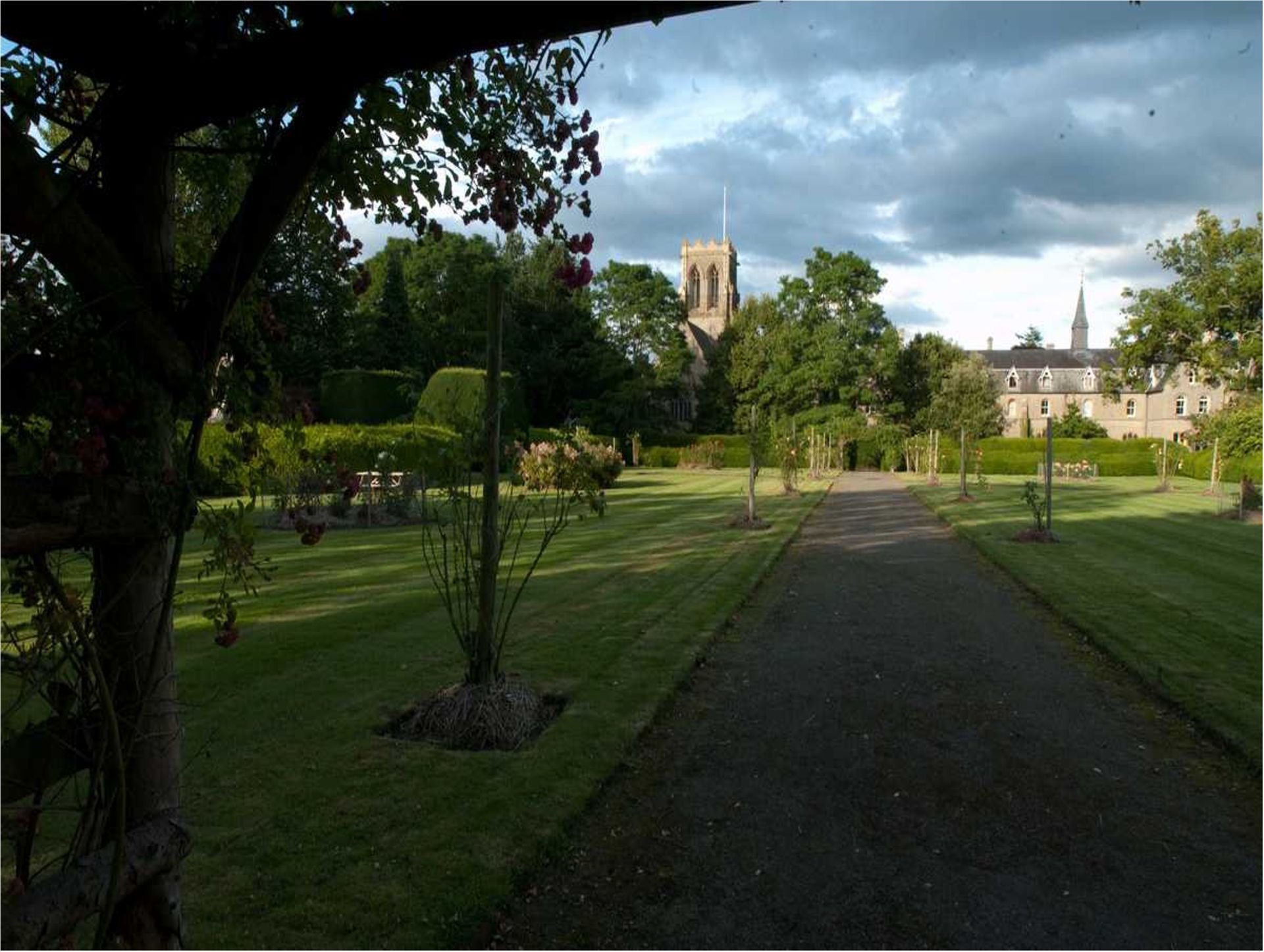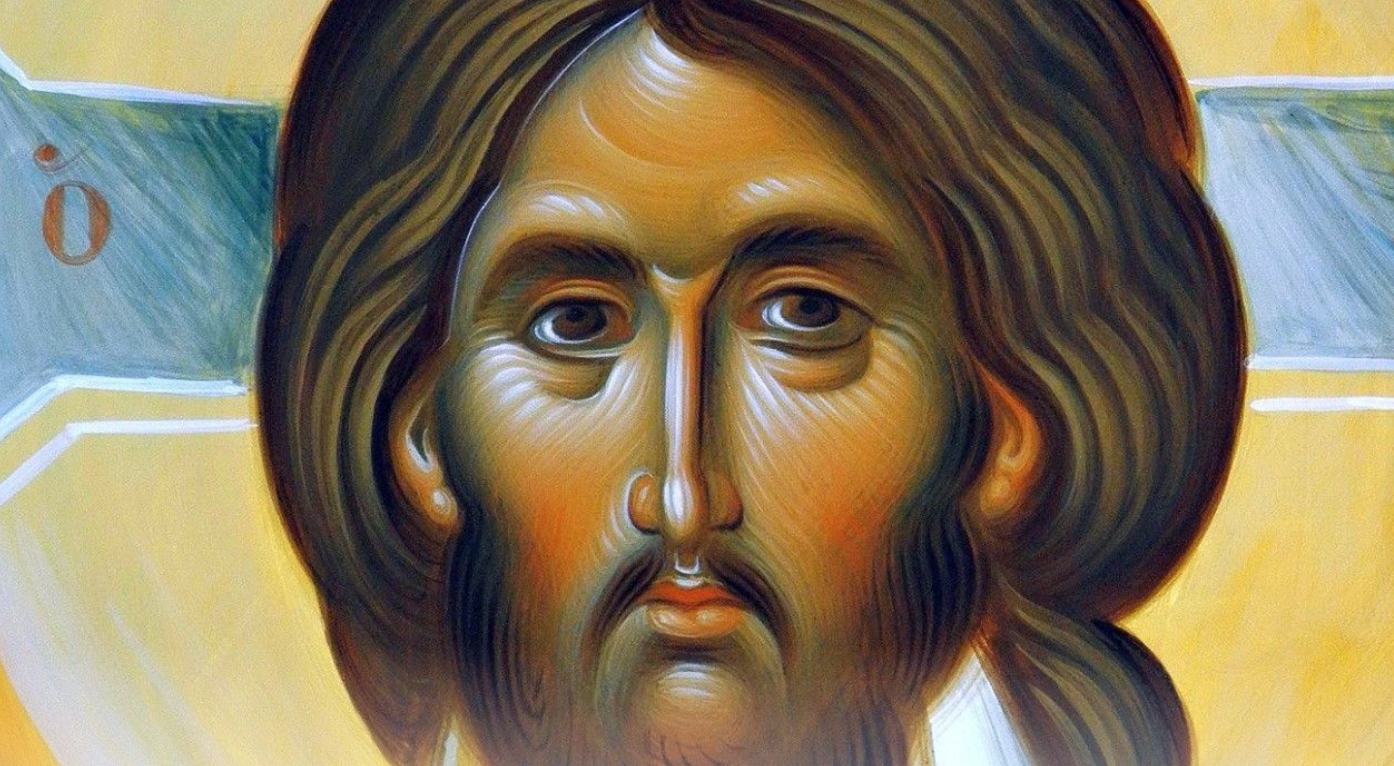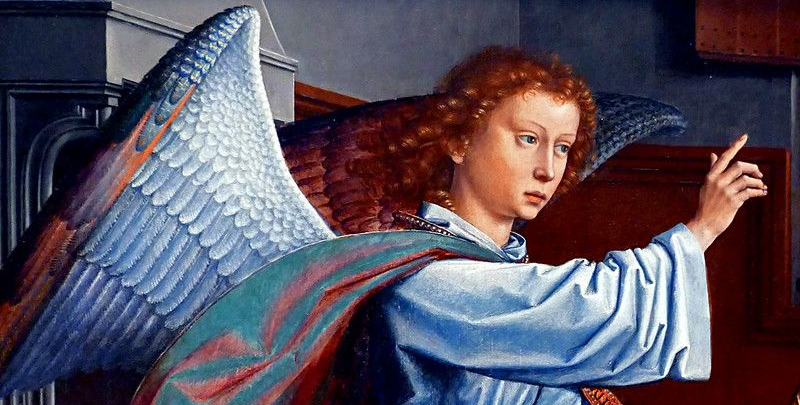Ambrose Cotham: Monk and Missioner
In our Refectory have been reading Joanna Vials' book The Indomitable Mr Cotham: Missioner, Convict Chaplain and Monk which gives a great pictures of what life was like for a missioner monk in the 19th Century. Here, for our website, she writes about his particular connections to Belmont.
The grave of Fr James Ambrose Cotham OSB (1810-1883) lies in the shadow of the monastery tower, in the oldest part of the cemetery. Fr Ambrose was a monk of Douai and when he moved to St Michael’s Priory, probably in the late summer of 1882, he was something of a curiosity in a number of ways. He was an old man in a community of young men; Prior WIlfrid Raynal was in his early 50s and the handful of teachers was younger than him, surrounded by about thirty students for the priesthood in their twenties.
The ethos of the English Benedictine Order was entering a period of flux but for those who wanted to listen, Fr Cotham could provide a lively example of what life had been like as a missioner monk immediately after Catholic Emancipation in 1829.
Ambrose Cotham had been educated at Stonyhurst and Douai, before final studies at Downside and ordination in December 1834. Three months later he was one of Bishop Bede Polding’s party which sailed for Australia. Although the intention was to initiate a monastery and seminary under the jurisdiction and influence of the English Benedictine Congregation, the only ordained monks in the group were Polding himself and the very junior Cotham; three Benedictine students and two non-professed ‘catechists’ made up the full monastic complement.
When the ship Oriental docked in Hobart, Van Diemen’s Land the plans were altered and Fr Cotham was instructed to stay behind for a short period until Fr William Ullathorne could be sent from Sydney to relieve him. The months passed and after an angry letter from Fr Cotham and a disastrous visit by Bishop Polding the relationship between the two men became very strained and Fr Ullathorne was sent on a recruitment drive to England, leaving Fr Cotham as the only priest on the island apart from the veteran Irish priest, Fr Phillip Conolly.
After this shaky start, and the dismissal of Fr Conolly from his post, Fr Cotham seems to have settled to his task. Although very young and with no experience of mission life in England, he was able to work with two Catholic communities to build St John’s Church, Richmond (1836) and St Joseph’s Church, Launceston (1842), often making the 125 mile horseback journey between Hobart to Launceston. Van Diemen’s Land at this period was basically a penal settlement; although there were a number of free settlers the majority of the population was connected with convictism, as military personnel, convicts working outside prison on assignments, convicts in penal stations, or as settlers with spent convictions. Until 1844 the entire Catholic population was served by three priests, at most, at any one time, with Bishop Polding based in Sydney, 600 miles away.
Although Fr Cotham remained the only Benedictine priest on the island throughout his time there, with infrequent contact with his confrères in mainland Australia, the tradition of ‘going on the mission’ for monks of the English Benedictine Congregation would have prepared him for the need to be both personally self-reliant and closely cooperative with his church congregations. Arduous physical conditions, the widespread culture of heavy drinking in a predominantly male society, and the inescapable background of convictism, was a severe test of an individual’s health and integrity. Fr Cotham’s period after 1844 as a convict chaplain, ministering mainly to women and orphan children, coincided with the establishment of Tasmania as a separate diocese under Bishop William Willson, and Fr Cotham was able to collaborate with him as the most experienced priest on the island.
In 1851, with the end of the transportation system in sight, Fr Cotham returned to England. The following year he was appointed to the challenging mission in Cheltenham. Although the town had become a fashionable spa town, attracting many visitors to all its churches, it was dominated by the Evangelical churchmanship of the Revd Francis Close and anti-Catholic riots had occurred as recently as 1850. In addition, a large influx of Irish emigrants lived in impoverished conditions in close proximity to the fashionable thoroughfares. The priority for Fr Cotham was to build adequate schools for the children of the poor and to erect a new church for the aspiring class of middle class Catholics, many of them converts.
Fr Cotham was
one of many second-generation priests who were providing for the developing
Catholic presence and identity in England, following Catholic Emancipation in
1829 and the return of the Catholic hierarchy in 1850. His fragmentary journal
records meetings with neighbouring Benedictine priests, as well as periods at
Downside for retreats, or visits to Belmont to give his opinion and experience on
the building project there which was not going well. Fr Prest, Procurator at
Ampleforth and experienced in building matters there, had been sent to Hereford
as an advisor. In a letter sent to Fr Prest in October 1857 the Provincial, Fr
Heptonstall, wrote ‘Cotham
was here this morning to whom I read your letter. He understood your
observations perfectly and was astonished at such blunders. The particulars you
mention were all guarded against in the specifications of the Cheltenham
Church… I am satisfied that
with your knowledge and experience on the matter and with that of Father Cotham
we might have guarded against these miserable blunders.’
By the time of this letter, Fr Cotham’s church of St Gregory the Great in Cheltenham had been consecrated with much ceremonial, and when St Michael and All Angels was consecrated in September 1860 Fr Cotham was there with three of his own building committee members.
Apart from having as his assistants priests who came to Cheltenham from Belmont – Fr Benedict Blount was his first assistant, and Fr Aloysius Wilkinson was his last assistant and successor as priest in charge of the Cheltenham mission - Fr Cotham chose to send his Australian nephew, Hugh Cotham, to St Michael’s for the start of his senior education, between 1865 and 1867. Hugh was never intended for the monastic life, but during Prior Bede Vaughn’s term of office the community experimented with a ‘little seminary’ providing a general education for boys.
After giving up the Cheltenham mission in 1873, and with his hopes of a return to Australia thwarted, Fr Ambrose Cotham returned to the south west of England for a last, brief, period on the mission at Bonham in Wiltshire and Wincanton, Somerset. He was probably already ill by this time and retired to St Michael’s, Belmont to be cared for. The community knew Fr Cotham as a singular character, though their recollections of him are somewhat embroidered:
It is said of him that having returned to Belmont after many years spent in the wilds of central Australia, he found life in a crowded house intolerable after the bush, and could only sleep in the solitude offered by the top of the Tower. [1]
The tower was barely completed during his retirement and it is doubtful if he could have climbed to the top with his infirmity, but it is likely he encouraged the young students to see him as an old-style missioner with a colourful past. Two of the ordained monks, Basil Hurworth and Peter Austin O’Neill, were assigned to be his close companions and helpers but his personal needs for the last ten months were met by Walter Redding, 18-years-old, and formerly a house servant at Malvern College.
For a few weeks before his death Fr Cotham worked and reworked the details of his Will. Although he was urged by the Prior of Douai to hand over all his financial assets to his original community before death, Fr Cotham maintained his right to dispose of his considerable wealth by a written Will. After settling a generous amount on his brother’s family in Australia, he divided his money between Douai and Belmont, his first and last Benedictine homes. For Belmont he left detailed suggestions (which he clearly intended to be taken as instructions) about how the money should be spent, on improving the buildings on the monastic estate.
Fr Cotham died on 1 May 1883 and his brother Fr William Cotham SJ came from Lancashire to celebrate the Solemn Requiem Mass. The cemetery boundary wall, running down to the iron gate, is close by, paid for out of his legacy and proposed by him beforehand. Characteristically, his final thoughts were for the practical well-being of the newest Benedictine house.
‘[In 1888] there were sundry material improvements to the property of the monastery, which were largely due to the generosity of Dom Ambrose Cotham who had died at Belmont in 1883. Besides helping to pay for the installation of the water-ram … he also caused the cemetery wall and gates to be built, prior to the cemetery being consecrated and the churchyard cross erected in 1888. Moreover, part of the money he left from his peculium was used to build larger and better farm buildings. Thus the west side of the present farm was built; the wain-house with granary above, and the root-house with haybarn above; and pigsties in the centre. The bricks and tiles of these buildings will be found to be stamped with the souvenir of the Queen’s Jubilee.’
Joanna Vials, March 2019
Joanna Vials read Philosophy at the University of Warwick. After living for a time as a Carmelite nun at Quidenham, she took a Diploma in Pastoral Studies at Birmingham University and then followed a career as a relationship counsellor. Since settling in Cheltenham with her husband in 2007 she has researched the development of the presence of the Catholic Church in the town and she currently serves on the Committee of the Cheltenham Local History Society. Her book
The Indomitable Mr Cotham: Missioner, Convict Chaplain and Monk
was published in Jan 2019 by Gracewing.





